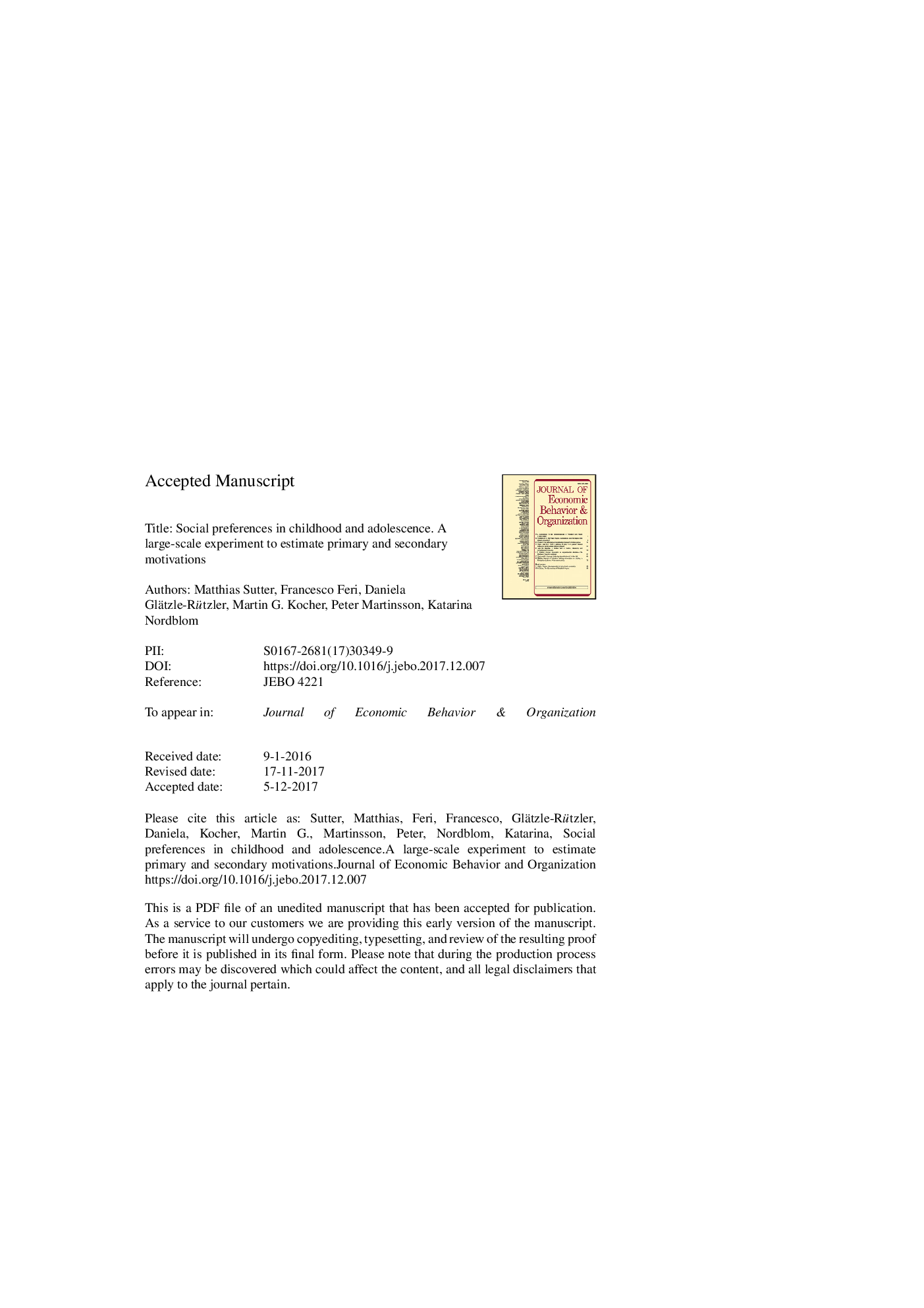| Article ID | Journal | Published Year | Pages | File Type |
|---|---|---|---|---|
| 7242652 | Journal of Economic Behavior & Organization | 2018 | 34 Pages |
Abstract
We elicit social preferences of 883 children and teenagers, aged eight to 17 years, in an experiment. Using an econometric mixture model we estimate a subject's primary and secondary social preference motivations. The secondary motivation indicates the motivation that becomes relevant when the primary motivation implies indifference between various choices. For girls, particularly older ones, maximin-preferences are the most frequent primary motivation, while for boys efficiency concerns are most relevant. Examining secondary motivations reveals that girls are mostly social-welfare-oriented, with strong equity concerns. Boys are also oriented towards social welfare, but are more concerned with efficiency than with equity.
Related Topics
Social Sciences and Humanities
Economics, Econometrics and Finance
Economics and Econometrics
Authors
Matthias Sutter, Francesco Feri, Daniela Glätzle-Rützler, Martin G. Kocher, Peter Martinsson, Katarina Nordblom,
